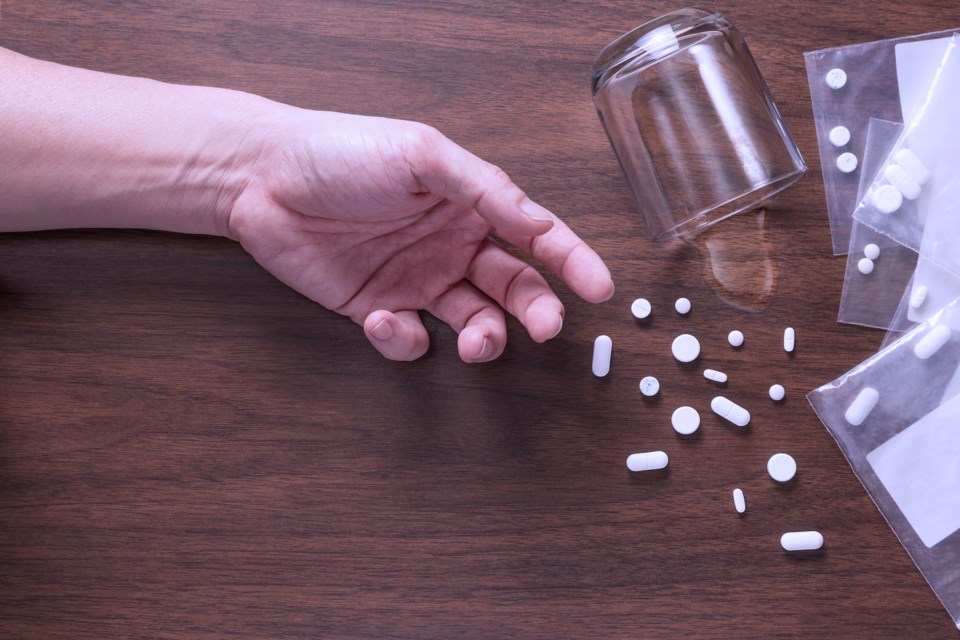Simcoe County is urging firefighters across the region to join with the paramedic service to follow the advice of Sunnybrook base hospital specialists as they add naloxone to their emergency response kits to help people experiencing an opioid overdose.
Naloxone can temporarily reverse the effects of fentanyl, methadone, heroin, morphine and oxycodone. Whether naloxone is injected or given as a nasal spray, it can help patients breathe normally and regain consciousness.
It’s so effective and convenient to use, Ontario gives free naloxone kits to past or current opioid users, their families or friends, those newly released from a correctional facility and clients of a needle/syringe program.
But adding naloxone to first responders' tool kits and providing medical oversight for firefighters and police with the county’s base hospital provider, the Sunnybrook Centre for Prehospital Medicine, doesn’t go far enough, said some county leaders.
“It’s critical we get serious about this issue and not just have people apply band aids,” said Midland Mayor Gord McKay.
“We have to go upstream. We’re dealing with illicit drugs that come into the country, medicines that coming in by FedEx. How do we prepare a policy statement with action? This is clearly an epidemic.”
The county is working with the Simcoe Muskoka District Health Unit and the North Simcoe LHIN on a regional opioid strategy, said paramedic services chief Andrew Robert.
In 2016, Simcoe County paramedics responded to 829 calls for patients who were experiencing an opioid overdose, a level which rose from 532 calls in 2012. Over the past five years, paramedic assistance for opioid overdose has been steadily rising, with 567 cases in 2014, 682 cases in 2014 and 787 cases in 2015.
“The rate for opioid-related death is higher in Simcoe Muskoka than the provincial average,” said Robert, who added visits to hospital emergency rooms for opioid poisoning in the region are above the provincial average.
Although paramedics responded to 863 opioid overdoses last year, they didn’t rely on naloxone for every case; they used it 63 times, Robert added, as they follow the premise of “first do no harm”.
“Naloxone can introduce risk to the patient through airway compromise from vomiting and injury through violence,” he explained.
Police and firefighters also are also wanting Naloxone in their kits to protect themselves, he added.
For every person who dies from an opioid overdose, 10 people are admitted to hospital for abuse treatment, 32 visit an emergency room for misuse or abuse, 130 are dependent on the drugs and another 825 people are using opioids for non-medical reasons, the Centre for Disease Control’s Dr. Ted Frieden said.
Innisfil’s deputy mayor Lynn Dollin said the opioid crisis in Ontario is just as acute as the one in British Columbia, although people may perceive British Columbia’s is more severe.
“It’s only because of the way the statistics are calculated. Really the issue is as bad in Ontario,” she said, reminding her council colleagues that every statistic is a life.
“In Ontario, there were more accidental overdose deaths than people killed in car accidents,” she said. “This is not just a big-city problem. It’s a problem throughout Ontario.”
Springwater Mayor Bill French agreed there needs to be some advocacy with the medical community and the pharmaceutical industry about painkillers.
“The natural-based drugs that have been effective for 100 years are not producing the revenues. We can talk to doctors all da long, but there is great incentive if you’re a doctor to introduce new medications to your patients,” French said.
“We need to go and put some pressure on the pharmaceutical companies.”



